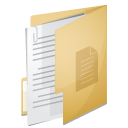Our Partners close more business.
Use these powerful resources to win more business, faster, with less effort.
Call 877-411-2220 x121 for personal support with any opportunity.
RESET SEARCH
Hosting Quote Estimator
GET a FREE Sandbox or Trial Environment NOW
How To Use This Tool:
To find answers to common RFP and RFI questions, select a tag, or, search for terms like "security", "performance", etc. You will find common questions and answers grouped together in one record. Follow the tag links to refine your search. Supporting downloads and documentation are available, below.
Please login to obtain download access to additional supporting documentation. Registered users can also contribute to the database. You can request access by Contacting Us.
Supporting Documents
Please note that assets with generic thumbnail require login for access. If you require access please Contact Us.
© Omegabit LLC, 2023


